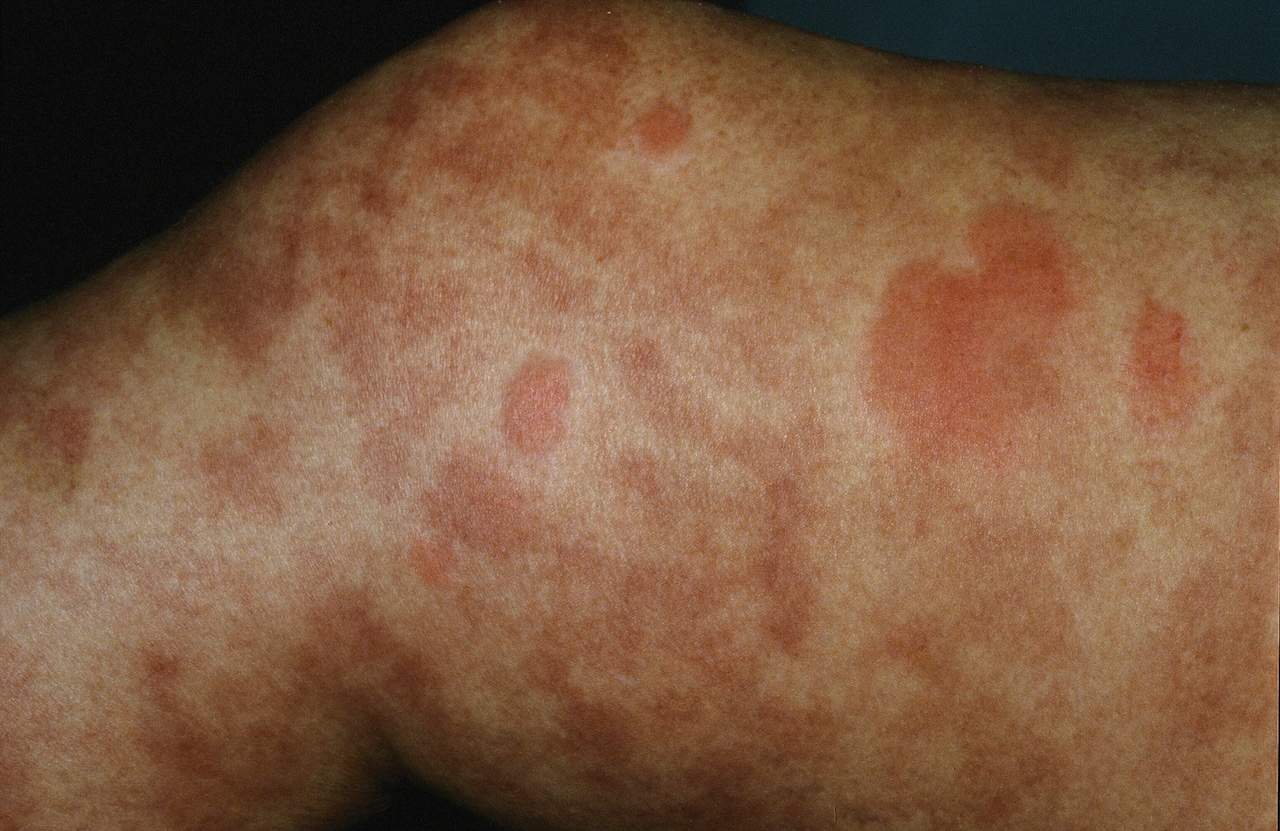 Active urticarial lesions leave darker, red/brown patches, unlike normal urticaria which leaves normal skin.
Active urticarial lesions leave darker, red/brown patches, unlike normal urticaria which leaves normal skin.
 Active urticarial lesions leave darker, red/brown patches, unlike normal urticaria which leaves normal skin.
Active urticarial lesions leave darker, red/brown patches, unlike normal urticaria which leaves normal skin.
Urticarial vasculitis (UV) may be defined as urticarial lesions that histologically show vasculitis. In contrast to the wheals of classic urticaria, UV lesions tend to:
UV may be divided into 2 categories based upon complement levels.
| Complement Levels | UV Characteristics |
|---|---|
| Normal | These patients may be thought of as having a small vessel vasculitis affecting the skin that is usually idiopathic and self-resolving. |
| Low | Patients with hypocomplementemic UV (HUV) are almost always woman and typically have arthritis, arthralgias, eye symptoms, asthma, GI symptoms and COPD. Autoantibodies to C1q are found. |
Urticarial lesions lasting more than 24 hours at any given location are characteristic. Pain and burning are more common than with typical urticaria. Diascopy may blanch much of the erythema, but hyperpigmentation and/or purpura remain. When the urticarial changes resolve, often purpura or other color change persists for a time. Angioedema may be associated.
Regardless of complement level status, a search for a cause of the vasculitis should be undertaken. When the complement levels are normal, the usual suspects including infection and new medications.
When the complement levels are low, the most common associated conditions are systemic lupus erythematosus and systemic sclerosis. Other possibilities include Sjögren's syndrome, serum sickness, viral infections (e.g. hepatitis C, infectious mononucleosis), mixed cryoglobulins, a monoclonal IgM gammopathy (e.g. Schnitzler syndrome), IgA multiple myeloma, fluoxetine administration, and rarely neoplasm. In one case, the lesions of urticarial vasculitis were induced by cold exposure and an IgG was found on serum protein electrophoresis (SPEP).
Workup may include drug history (e.g. dexfenfluramine), skin biopsy, CBC, ANA, Ro, La, rheumatoid factor, ESR, urine analysis, CH50, C3,C4, liver enzymes, hepatitis C serology, cryoglobulins, and serum protein electrophoresis (SPEP).
Homepage | Who is Dr. White? | Privacy Policy | FAQs | Use of Images | Contact Dr. White